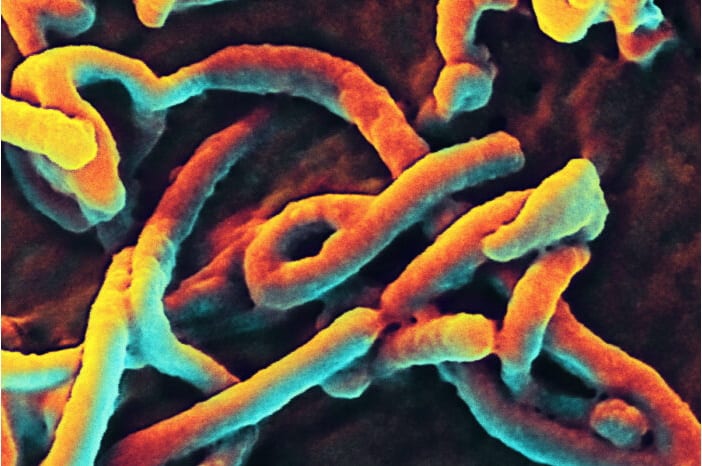
A new tool can rapidly and reliably detect the presence of Ebola virus in blood samples at lower concentrations than existing tests, researchers from the US report. The device has the potential to help control future outbreaks of the deadly infection.
Ebola virus disease is a viral haemorrhagic fever that is estimated to kill up to 89% of those who contract it. It is spread through contact with the blood, bodily fluids or organs of an infected person or animal. First discovered following two simultaneous outbreaks in Nzara, in South Sudan, and Yambuku, in the Democratic Republic of the Congo, it has since led to dozens of outbreaks in the tropical regions of sub-Saharan Africa. The worst outbreak to date occurred in West Africa between late 2013 and early 2016, and is estimated to have caused 11,323 deaths.
In recent years, a selection of vaccines and effective therapies for Ebola have been developed. Unfortunately, however, they are not widely available. Accordingly, health officials typically combat the disease by attempting to contain outbreaks, an approach that relies on being able to quickly identify infections and inhibit further transmission. This is a challenge though, as Ebola symptoms – body aches, bleeding, diarrhoea and fever – are highly nonspecific, meaning that it can be easily mistaken for other viral infections or malaria.
Existing tests for the disease, meanwhile – which include PCR-based techniques, lateral flow assays and enzyme-linked immunosorbent assays (ELISAs) – are limited by lengthy assay times, and the need for additional electronics for sample processing, trained technicians and even cold chain custody. In addition, they tend not to be very sensitive until the virus has had days to multiply to high levels in the body.
In this latest study, clinical pathologist Abraham Qavi of Washington University in St Louis and his colleagues propose an alternative based on optical microring resonators, a type of whispering gallery mode device that can be used for highly sensitive molecular detection.
Such tools take their name from the effect originally discovered for sound waves in the Whispering Gallery in London’s St Paul’s Cathedral. Words whispered against the wall of the dome can be heard clearly more than 30 m away, thanks to the way in which sound waves travel around the concave surface. This is an example of the principle of acoustic resonance – a phenomenon that can also be seen with light waves at a much smaller scale.
Explaining how their whispering gallery mode device can detect the presence of tiny amounts of Ebola-related molecules in blood samples, Qavi says: “We trap light in the resonators and use resonance to enhance and boost our signal. By monitoring where this resonance wavelength occurs, we can tell how much of the molecule we have.”
The molecule in question is a sensitive antibody developed to react to a soluble glycoprotein released by the Ebola virus. This protein is also key to current diagnostic tests for Ebola — but the new antibody is capable of detecting it at lower levels. In tests on blood from infected animals, the microring resonator devices could detect the diagnostic glycoprotein as early as, or earlier than, the current leading tests. The test, which only took 40 min, also provided information on the viral glycoprotein concentration. This information could potentially be used to tailor treatment plans for individual patients.
“Any time you can diagnose an infection earlier, you can allocate healthcare resources more efficiently and promote better outcomes for the individual and the community,” Qavi says. “Using a biomarker of Ebola infection, we’ve shown that we can detect Ebola in the crucial early days after infection. A few days makes a big difference in terms of getting people the medical care they need and breaking the cycle of transmission.”

Automated system offers fast, reliable malaria screening
“Rapid, biosensor-based assays are needed to deal with a myriad of global health concerns, among them the detection of virus infections with the potential to spread across the globe,” says Frank Vollmer, a physicist from the University of Exeter, UK, who was not involved in the new study. Whispering gallery mode sensors, he explained, have emerged as one of the most sensitive and multiplexed biosensor technologies that can address this need.
He added: “[The researchers] impressively combine the high sensitivity and multiplexed readout of the whispering gallery mode sensor with the specific detection of the Ebola virus glycoprotein in patient samples – providing the real-world whispering gallery mode biosensor application that can save lives.”
With their initial study complete, the researchers are now looking to miniaturize the device and test their diagnostic approach on infected individuals.
The study is described in Cell Reports Methods.
